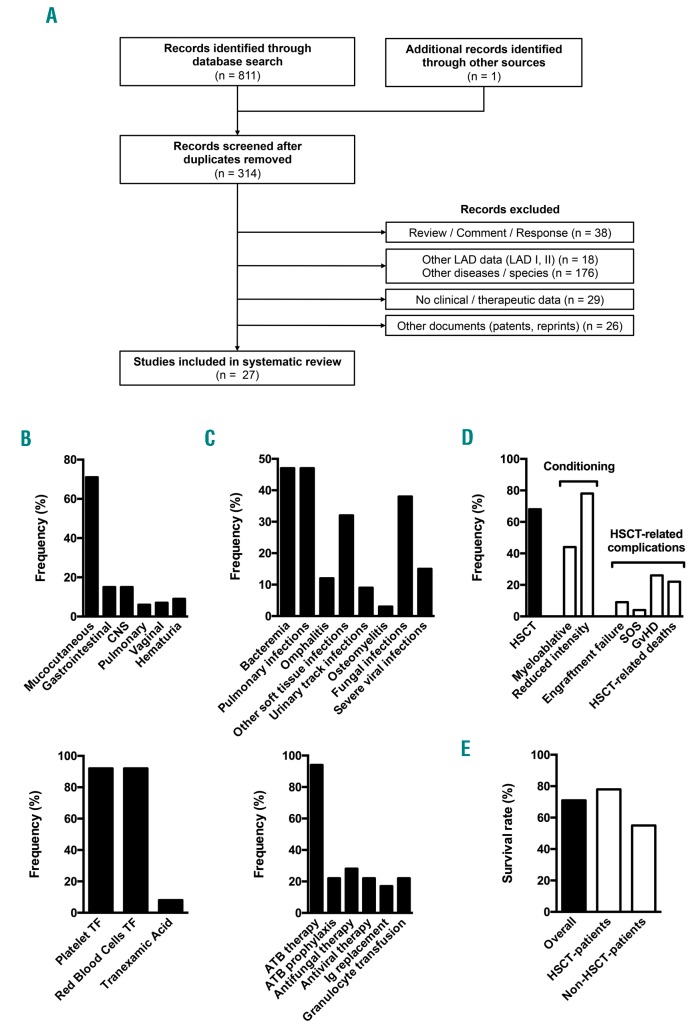Figure 1.
Systematic review of leukocyte adhesion deficiency type III complications, treatments and outcome. (A) Flow diagram of the systematic review. The number or records included or excluded is indicated at each step. Twenty-seven records reporting data from 34 patients were ultimately included in the analysis. The previous report from our group2 was excluded. (B) Prevalence of bleeding events with regards to topography (top; n=27) and associated treatments (bottom; n=24) among LAD-III patients reported in the literature. Frequency of vaginal bleeding was calculated for female patients. (C) Prevalence of infections with regards to topography/type (top; n=27) and associated treatments (bottom; n=18) among LAD-III patients reported in the literature. (D) Description of LAD-III patients treated with hematopoietic stem cell transplantation (HSCT). The percentage of patients treated with HSCT was calculated for all reported LAD-III patients (n=34). The frequency of conditioning regimens and HSCT-related complications was calculated for transplanted patients (n=23). Some patients underwent two HSCTs with different types of conditioning regimen, thus the sum of the conditioning regimen frequencies exceeds 100%. Conditioning regimen intensity was defined as previously reported.13 (E) Survival rate of reported LAD-III patients. LAD: leukocyte adhesion deficiency CNS: central nervous system; TF: transfusion. ATB: antibiotics; Ig: immunoglobulin; GvHD: graft-versus-host disease; SOS: sinusoidal obstruction syndrome.

